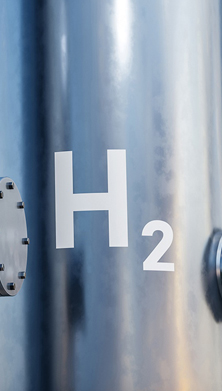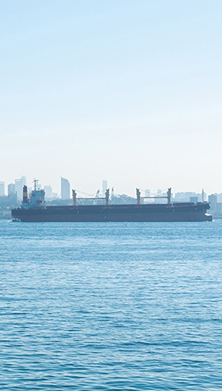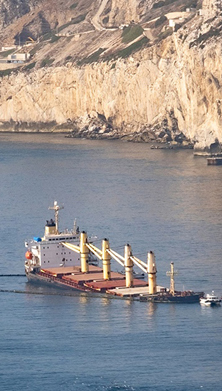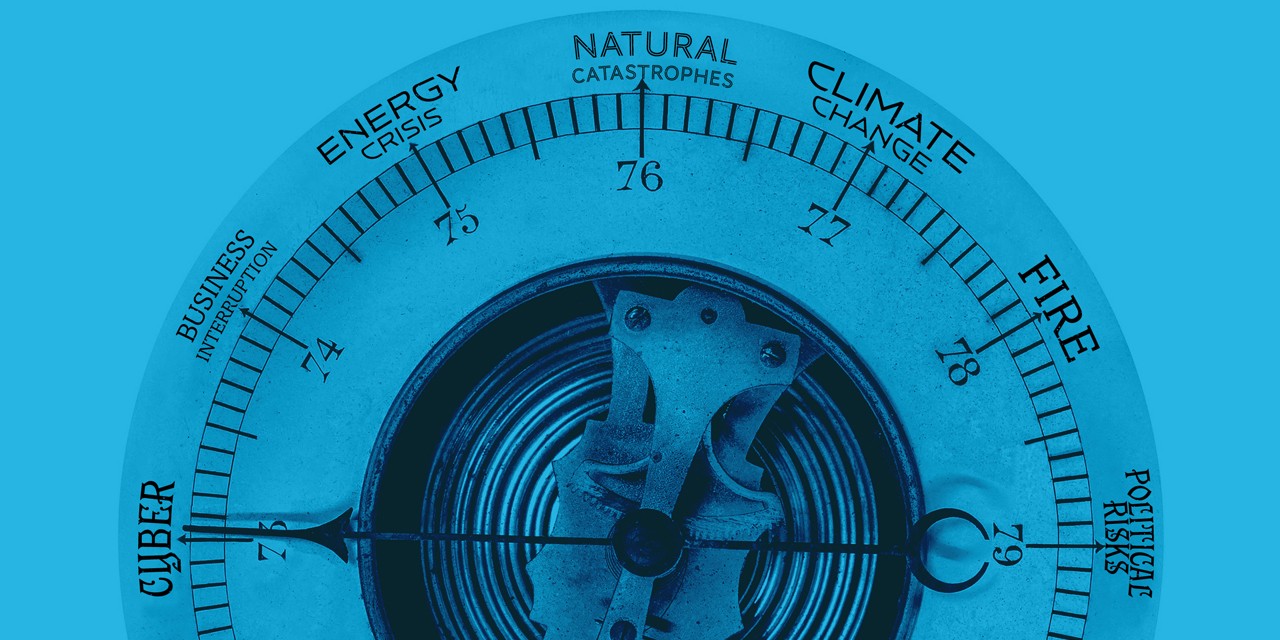This article is part of the
Safety and Shipping Review 2023
Downturn challenges safety and decarbonization progress
Following the post-pandemic boom in container shipping, economic and geopolitical uncertainty and falling demand has hit freight rates. The cost of shipping a container between Asia and the US or Europe in April 2023 was more than 80% lower [1] than a year earlier. while some routes are now at pre-pandemic levels.
As freight rates have declined, new vessels ordered during the boom have begun to arrive, adding to already excess capacity. The Mediterranean Shipping Company [2] took delivery of two mega ships in March 2023 – MSC Tessa and MSC Irina – which are among the world’s largest container ships to date at more than 24,000 teu each. It followed the delivery in February of the 24,118 teu OOCL Spain, the first of six under construction.
The Baltic and International Maritime Council (BIMCO) [3] forecasts weak demand for container shipping outstripping supply in 2023, putting freight rates and second-hand ship values under pressure through to next year. The shipping body predicts negative demand growth through the first half of 2023, with a recovery in the second half leading to overall demand growth of 1-2% in 2023, followed by 5-6% in 2024.
The global container fleet is forecast to grow by 6.3% in 2023 and by 8.1% in 2024. Supply is set to rise with the easing of port congestion and deliveries of new vessels ordered during the boom period of the past two years. BIMCO predicts that 4.9 million teu will be delivered during 2023 and 2024, equivalent to an additional 19% of the fleet size at the beginning of 2023.
“A big question is whether the decline in freight rates will result in cost-cutting and, if so, will this impact maintenance levels or result in lower risk management budgets? In prior downturns, investment in vessel maintenance has not always been at the required level, leading to losses and an increase in machinery claims,” says Justus Heinrich, Global Product Leader Marine Hull at Allianz Global Corporate & Specialty (AGCS).
Lower freight rates could also potentially put vital investments in fire safety and decarbonization in jeopardy, according to Captain Rahul Khanna, Global Head of Marine Risk Consulting at AGCS.
“We are on the cusp of the delivery of new larger vessels at a time when the industry is already under pressure from lower freight rates. This may be good news for cargo owners, but not so for the container shipping industry,” says Khanna.
“Record profits for the container industry supported innovation in areas such as decarbonization, alternative fuels and fire detection and prevention. If the market comes under pressure, there is a risk such initiatives will lose momentum. We would not like to see safety initiatives, especially in terms of the improvements we are hoping to see in container ship and roll-off, roll-on (Ro-ro) design and fire protection in particular, take a back seat.”
Trend towards large ships intensifies
Over two-thirds (65%) of fleet growth over the next two years will be concentrated in the segment of ships larger than 15,000 teu, while the fleet of ships smaller than 3,000 teu will reduce, The Baltic and International Maritime Council (BIMCO) estimates. [4]
“Decarbonization and the drive for more efficient shipping will reinforce and accelerate the trend for large vessels, which now make up a significant proportion of the world fleet, and account for a disproportionate amount of container trade,” says Captain Rahul Khanna, Global Head of Marine Risk Consulting at Allianz Global Corporate & Specialty (AGCS).
“Large container vessels are clearly here to stay. Efforts now need to focus squarely on making them more efficient, less polluting, and safer. If the risks are not appropriately managed, some insurers may look to scale back their exposure to large container vessels and other mega ships.”
As new orders are delivered, smaller, older tonnage is being replaced by large container vessels, Justus Heinrich, Global Product Leader Marine Hull at AGCS notes. The 10 largest container operators have 440 new vessels on order, and the majority will be larger than the ships they replace.
“An increase in the number of larger vessels leads to higher container cargo accumulation and exposure,” says Heinrich. “This trend could compound the problems seen in recent years with large vessels, including fires, grounding and port blockages. The salvage cost for large container ships is tremendously high, with only a limited number of ports and shipyards able to service and repair such vessels.”
According to Cefor (the Nordic Association of Marine Insurers) analysis [5] of hull claims trends, the container ship segment is the only large segment with an increase in the claim cost per vessel between 2020 and 2022 and an increase in the frequency of large losses. The frequency of claims in excess of US$500,000 remained high, contrary to the bulk and tank segment.
The increase in the number of large vessels may be one of the factors behind high levels of shipping incidents in South East Asia, with the region being something of a hot spot in recent years for marine insurance claims and total losses. “We have seen a number of grounding and collision incidents involving large vessels in both the Singapore Strait and the South China Sea. The waters around Singapore can be congested and the shipping lanes narrow. A small mistake by a large vessel can easily result in a grounding or collision,” says Captain Nitin Chopra, Senior Marine Risk Consultant at AGCS.
Large vessels can also lead to longer delays for cargo owners. Whether it is a fire or a grounding incident, if it involves a large container vessel it will likely take longer to resolve, leading to increased costs. Large vessels can take longer to re-float when grounded and may have to travel further to reach an appropriate port of refuge or repair yard. “The larger the vessel, the higher the risks of having multiple interests involved in an incident. Companies need to consider the risks of container shipping cargo delays and prepare contingency plans should their cargo become involved in an incident,” says Régis Broudin, Global Head of Marine Claims at AGCS.
What’s in a teu?
Scrapping to turn spotlight on ESG issues
With the downturn in freight rates, shipowners are likely to take the opportunity to scrap older vessels, many of which have had their working lives extended by high demand in recent years. This trend is likely to be reinforced by tougher International Maritime Organization (IMO) climate regulations and the industry’s move to decarbonize shipping. The Baltic and International Maritime Council (BIMCO) expects that around 1 million teu will now be recycled. [6]
Scrapping older tonnage is a positive trend from a risk quality perspective, and it should help stabilize freight rates, explains Justus Heinrich, Global Product Leader Marine Hull at Allianz Global Corporate & Specialty (AGCS): “Scrapping had all but stopped after the Covid-19 pandemic as every vessel was needed to meet demand, resulting in many vessels operating beyond their usual life expectancy. With the fall in freight rates, we have seen an uptick in the scrapping of older and less efficient vessels.”
However, the disposal of old ships may challenge the industry’s environmental, social, and governance (ESG) credentials. As shipping companies begin to publish ESG information, the sustainability of ship recycling will come under increasing scrutiny, according to Captain Nitin Chopra, Senior Marine Risk Consultant at AGCS.
“With the introduction of ESG requirements, and with Scope 3 emissions (those that are not under a company’s direct control, for example in its supply chain), shipowners will need to demonstrate due diligence and responsible behavior, even when scrapping vessels,” says Chopra.
References
[1] 1 Freightos, Shipping & freight cost increases, current shipping issues, and shipping container shortage [2023], April 13, 2023
[2] gCaptain, MSC takes delivery of MSC Tessa, one of the world’s largest container ships, March 9, 2023
[3] BIMCO, Container shipping market overview and outlook Q1, 2023, February 28, 2023
[4] BIMCO, Container shipping market overview and outlook Q1, 2023, February 28, 2023
[5] Cefor, 2022 hull trends released, April 13, 2023
[6] BIMCO, Container shipping market overview and outlook Q1, 2023, February 28, 2023
Pictures: AdobeStock
Our experts
Annual survey identifying business risks
Allianz Risk Barometer

Top 3 business risks in Marine and Shipping in 2023
- Fire, explosion (29%) - 2022 rank: 3 (25%)
- Changes in legislation and regulation (25%) - NEW
- Cyber incidents (25%) - 2022 rank: 4 (23%)
Newsletter
Keep up to date on all news and insights from AGCS




















